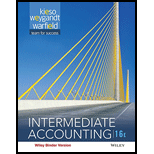
Securities: Securities are the financial assets which are negotiable are issued by the organization and also provide the rights to trade the securities in the financial market. Securities are classified as debt security and equity security.
Debt Security: Debt security is a financial instrument which is issued by the organization and is sold to the investors. Bonds, commercial papers, debentures and government securities are known as debt securities.
Equity Security: An equity security represents the shares of the organization. These shares can be purchased from the organization. It mainly represents the ownership of the organization and also provides the income in the form of dividends. Equity securities are available as common
To identify: To identify the difference between the debt security and an equity security.
Explanation of Solution
The basic difference between the debt and equity securities is as follows:
Legal right of the securities: The debt securities are the securities which can be said as the corporate borrowings and these are the company borrows money from investors.
The equity securities are the investments in the organization which provides the right to claim on profits and the resources of an organization. It basically offers an ownership position in the company.
Risk involved: Risk involved in the debt security is less as compared to equity securities.
Equity securities are more risky.
Price fluctuations: Debt security is less volatile as it does not experience more changes in its prices.
Equity security is more volatile as it experiences more changes in its prices.
Thus, the above mentioned are the difference between the debt security and equity security.
Want to see more full solutions like this?
Chapter 17 Solutions
Intermediate Accounting, Binder Ready Version
- Please provide the accurate answer to this general accounting problem using appropriate methods.arrow_forwardPlease provide the accurate answer to this general accounting problem using appropriate methods.arrow_forwardI need help with this general accounting question using standard accounting techniques.arrow_forward
- Can you help me solve this general accounting question using valid accounting techniques?arrow_forwardCan you solve this general accounting question with accurate accounting calculations?arrow_forwardI am looking for the correct answer to this general accounting problem using valid accounting standards.arrow_forward
- I am searching for the accurate solution to this general accounting problem with the right approach.arrow_forwardCan you solve this general accounting problem with appropriate steps and explanations?arrow_forwardPlease explain the solution to this general accounting problem using the correct accounting principles.arrow_forward

 AccountingAccountingISBN:9781337272094Author:WARREN, Carl S., Reeve, James M., Duchac, Jonathan E.Publisher:Cengage Learning,
AccountingAccountingISBN:9781337272094Author:WARREN, Carl S., Reeve, James M., Duchac, Jonathan E.Publisher:Cengage Learning, Accounting Information SystemsAccountingISBN:9781337619202Author:Hall, James A.Publisher:Cengage Learning,
Accounting Information SystemsAccountingISBN:9781337619202Author:Hall, James A.Publisher:Cengage Learning, Horngren's Cost Accounting: A Managerial Emphasis...AccountingISBN:9780134475585Author:Srikant M. Datar, Madhav V. RajanPublisher:PEARSON
Horngren's Cost Accounting: A Managerial Emphasis...AccountingISBN:9780134475585Author:Srikant M. Datar, Madhav V. RajanPublisher:PEARSON Intermediate AccountingAccountingISBN:9781259722660Author:J. David Spiceland, Mark W. Nelson, Wayne M ThomasPublisher:McGraw-Hill Education
Intermediate AccountingAccountingISBN:9781259722660Author:J. David Spiceland, Mark W. Nelson, Wayne M ThomasPublisher:McGraw-Hill Education Financial and Managerial AccountingAccountingISBN:9781259726705Author:John J Wild, Ken W. Shaw, Barbara Chiappetta Fundamental Accounting PrinciplesPublisher:McGraw-Hill Education
Financial and Managerial AccountingAccountingISBN:9781259726705Author:John J Wild, Ken W. Shaw, Barbara Chiappetta Fundamental Accounting PrinciplesPublisher:McGraw-Hill Education





